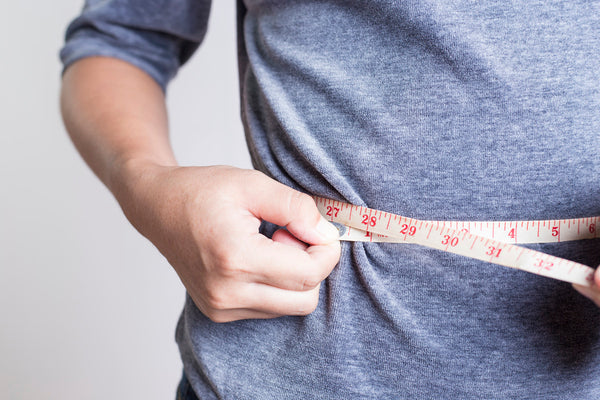Weight loss is a common goal. We lose weight as a combination of body fat and lean body mass, which includes muscle. A widely held belief is that 25% of all weight loss is lean body mass, but this rule has been disproven.

Instead, how we lose weight matters. Some weight loss methods spare muscle loss while others increase it.
Retaining muscle should be a high priority! After all, higher amounts of muscle supports a higher metabolism, which can allow for less strict dietary adjustments.
Those with more muscle are better able to avoid regaining the weight over time, too. What are some of the top factors for maintaining muscle during weight loss?

Lose More Fat and Less Muscle
1. Sleep time
Many controlled studies have assessed how sleep influences body fat percentage, and how much fat or muscle is eliminated by weight loss.
One study allowed half of participants to sleep for just over 5 hours per night, and the others slept about 7.5 hours at night. The amount of food was controlled for several weeks to ensure that both groups lost the same amount of weight.
Did the amount of sleep alter the proportion of weight lost as fat vs lean body mass (which includes muscle)? Compared to the group with inadequate sleep, the well-rested group had 2.4 times more fat loss and better retained muscle mass.
Even if we manage our diet carefully for weight loss, inadequate sleep causes body fat to be retained and more muscle lost.
2. Rate of weight loss
Unless directed by your physician, a slower weight loss of two or less pounds per week offers some advantages over rapid weight loss.
Slower weight loss reduces waist size more effectively and maintains more muscle on average.
Researchers observe this in a variety of study participants, including individuals with chronic disease and obesity. Slower weight loss was also better for muscle and strength gains according to studies on athletes who strength-train and those who compete in wrestling.
3. Exercise during weight loss
Weight loss success typically requires diet change. With diet-only strategies, we risk losing more muscle. This is because exercise preserves muscle during weigh loss.
Reviews conclude that lead body mass is best "preserved when [weight loss] interventions include exercise."
Other weight loss studies report that those who exercise regularly lose more fat around the waist compared to those who modify their diet only.
When we only adjust dietary habits for weight loss, we are more likely to regain the weight compared to those who are physically active and adjust their diet at the same time. This may be because the extra calories expended by working muscles allow for less strict control of food intake.

Focus on Today
It is easy to fixate on the scale during weight loss. The scale can change based on many factors and it reflects your level of hydration and salt intake.
During weight loss, the scale doesn't distinguish between muscle and fat loss. Instead of the scale, think about what you can do today to make healthier choices that make you feel good.
Gradual habit adjustments tend to be more enduring than extreme changes to your routine. Remember that discovering your healthier lifestyle is a process. Sustainable habits may reduce your weight more slowly, but they help you lose less muscle in the long run.
Send your body the signal that strength must be retained by challenging your muscles regularly and give yourself the gift of a good night's rest to support your mood and motivation for healthier choices.
Take one day at a time!
________________________________________________________________
About the Author

Karlie Intlekofer, PhD, CNC, CPT, Global Wellness Researcher, Treo Wellness
Treo Wellness is the services division of Johnson Health Tech, the parent company of Matrix Fitness. As Treo's Global Wellness Researcher, Karlie uses recent research findings to support healthier daily habits. Karlie earned her doctorate in Neuroscience and Behavior and bachelor's degree in Health and Exercise Science.










































